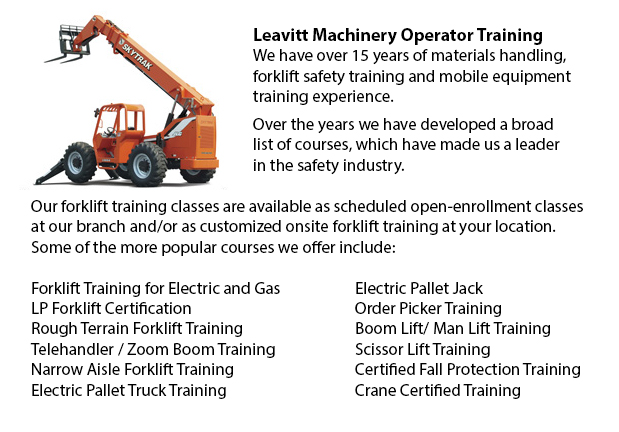
Sudbury Telescopic Training - The telescopic handler forklift is more commonly known as a telehandler, and is a machine which could lift products and materials to greater heights and has more versatility than a conventional forklift. It is often preferred over the conventional masted counterbalance truck (rough and standard terrain). Whether utilized for transporting raw materials into the back of a dump truck or for transporting pallets in a warehouse, the telescopic forklift is a valuable machine. Accredited telescopic handler training is vital to guarantee the safe and efficient use of the unit.
A telescopic forklift is designed to lift heavy stuff using an arm, which extends in segments similar to a telescope. To select a telescopic forklift, you must consider how the equipment will be utilized and for how long. Required lift heights and work site terrain should be taken into consideration. Warranty, parts and price are all factors involved in purchasing a telescopic forklift. If you are going to lease, you have to compare terms, delivery costs and prices.
This type of lift truck comes in numerous sizes, which directly reflects the amount of weight it could load and the heights it can safely lift products to. If the task is to transport supplies into the rear of a pick-up then a small to medium sized telescopic forklift is perfect. Lifting heavier things up higher would require a larger lift. Careful consideration of how the lift will be used helps ensures you would choose the right size for safety and stability.
Attachments are another consideration when choosing machinery. Ask what attachments are offered from the manufacturer. There are bucket attachments, pallet attachments and various attachments for particular purposes.
Work site terrain influences the selection of tires for the telehandler. Cushion tires are constructed of rubber all the way through, and are seen on smaller units. Cushion tires are appropriate for telehandlers being used inside a warehouse with a concrete floor. They offer durability and stability. Pneumatic tires are often on bigger units made for use on varied, outdoor terrain where there might be dirt, rock, asphalt and concrete. They provide the best articulation and traction.
-
Wheel and Track Loader Training in Sudbury
Lift trucks are obtainable in several different models that have different load capacities. The majority of average forklifts used in warehouse environment have load capacities of 1-5 tons. Bigger scale units are utilized for heavier loads, like for... More -
Sudbury Aerial Lift Certification
Sudbury Aerial Lift Certification - Aerial Lift Certification is for individuals who requires an in-depth understanding of aerial lift safety. Inspectors and operators, supervisors, maintenance workers and construction craftsmen must perform a traini... More -
Sudbury Forklift Certification Schools
Sudbury Forklift Certification Schools - Within North America, forklift certification is mandatory, making forklift training programs necessary for both the company and their employees working as forklift operators. Forklift training focuses on healt... More -
Sudbury Boom Lift Operator Training
Sudbury Boom Lift Operator Training - A cherry picker refers to a type of aerial work platform. Cherry pickers include a platform or bucket at the end of a hydraulic lifting system. The device is likewise called a man lift, boom lift, basket crane or... More -
Sudbury Telehandler Certification
Sudbury Telehandler Certification - Telehandler certification programs are both for operators who have some experience driving a standard forklift and for those with no experience. The real-world training offered by these courses produces graduates w... More -
Operator Safety Training, Re-Qualification Training, In-House Instructor Training in Sudbury
Lift trucks are utilized in just about all industrial construction sites and in warehouse operations and in boat yards. The reach feature of a lift truck is a vital component used in several applications like for example when a shelving system is bei... More -
Crane / Overhead Crane / Self-Erect Crane / Truck Mounted Crane / Hydraulic Cranes Training in Sudbury
Bridge cranes or overhead cranes are a type of industrial material handling crane making use of a line and hook apparatus which runs on a horizontal beam running along two widely separated rails. Lots of overhead cranes could be seen in a long factor... More -
Sudbury Forklift Safety Training
Sudbury Forklift Safety Training - Anyone who wants to operate a lift truck should take a forklift safety training course in order to become a certified forklift truck operator. There are a variety of ways to obtain forklift training. Programs are pr... More

Forklift Certification Sudbury
TOLL FREE: 1-888-254-6157
Sudbury, Ontario
forkliftcertificationsudbury.com
Email Us
About Us


